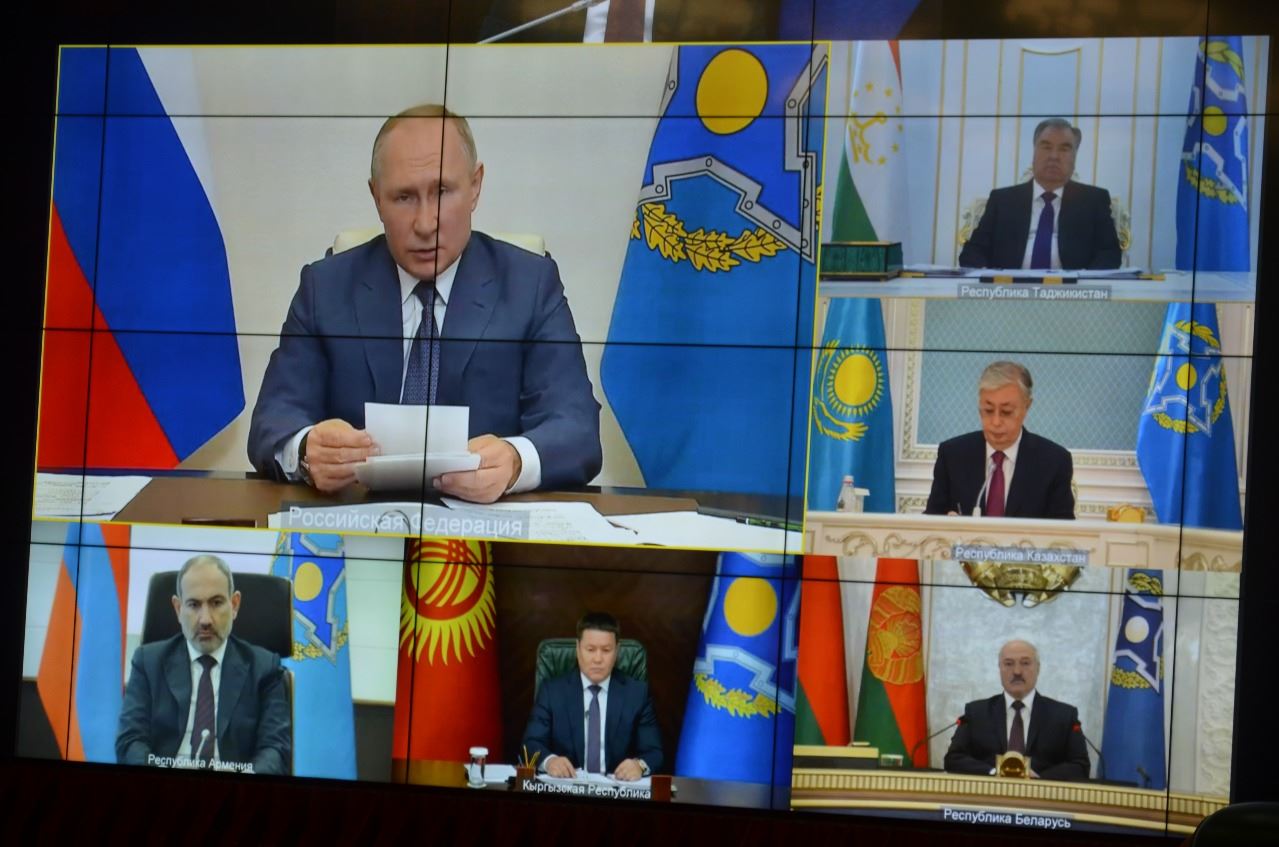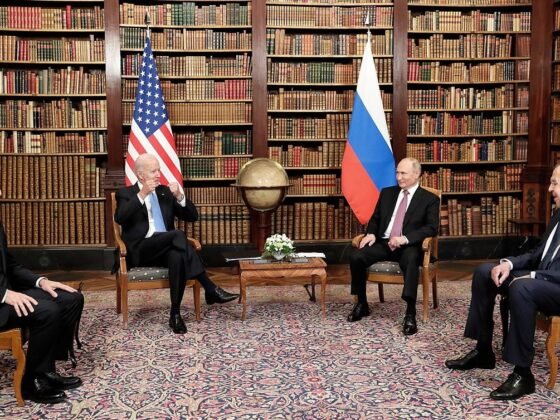(PONARS Eurasia Commentary) Will Russia promote the unproved Collective Security Treaty Organization (CSTO) in the shadow of the Shanghai Cooperation Organization (SCO)?
On July 7, 2021, Tajikistan requested that its fellow CSTO members fully implement the 2013 decision on “Assistance to the Republic of Tajikistan in Strengthening the Tajik-Afghan Border.”
As the complete withdrawal of the United States and its allies from Afghanistan looms, experts observe that the country is faced with a near-certain security collapse. Commander General Austin S. Miller of the departing American troops warned that a civil war could be “visualized” if the security erosion continued. In recent weeks, there have been possible signs that this grim prediction has begun. Afghan security forces gave way to the advancing Taliban earlier this month, including a flight of over 1,000 soldiers to neighboring Tajikistan.
There is little doubt that Washington does not wish to see Afghanistan morph into another failed state that could become a base of operations for new terrorist groups like those that had orchestrated the 9/11 attacks almost two decades ago. President Joe Biden underscored how the country was developing “counterterrorism over-the-horizon capability,” which would allow the United States to keep its eyes “firmly fixed on any direct threats… and act quickly and decisively if needed.”
However, in the immediate aftermath of the troop drawdown, it is Afghanistan’s neighbors—both bordering the country and nearby—that are most worried and are contemplating their options. For Russia, concern over Afghanistan is hardly new. Geographically speaking, post-Soviet Russia has long considered Tajikistan and Kyrgyzstan as “gatekeepers to Central Asia and protectors of Russia’s southern borders.” During the 1990s, Moscow prioritized assisting these poor but strategically important states.
At the time, there was understandable concern about the ability of all former Soviet Central Asian Republics to deal with a variety of challenges, including, among others, terrorism, radical nationalism, ethnic clashes, and religious intolerance, which affected some of these countries during the 1990s. The establishment of the Taliban in Afghanistan in the 1990s and the civil war in Tajikistan presented additional insecurities. This led Moscow and a number (albeit not all) of its post-Soviet partners to upgrade their existing collective security arrangements in 2002 into what became known as Collective Security Treaty Organization (CSTO). The organization evolved since those days and developed capable, albeit unproven, tools for tackling security concerns.
The gradual evolution and development of a Collective Rapid Reaction Force (CRRF) of 18,000 troops attached to the CSTO was an important milestone. However, what seems to continue to be a challenge is the unpreparedness of its members to use the organization’s tools, beyond regular drills, to address their needs when they arise. The CSTO had already shown its inability to act over a decade ago in Kyrgyzstan during ethnic clashes, even though it was invited by one of the member states to come to its assistance. Back then, there were legal constraints emanating from the CSTO charter that precluded the organization from intervening in intra-state conflicts of its members. Its role was primarily on fending off external threats. This issue was later addressed at the CSTO summit in 2011.
In 2020, during the Nagorno-Karabakh conflict, the CSTO did not come to Armenia’s assistance. Russian President Vladimir Putin pointed out that there was no legal foundation for the CSTO to act since the fighting did not take place on Armenia’s soil. However, some analysts argue that many Armenians expected some support from the organization. In the aftermath of Azerbaijan’s victory, they felt disillusioned with the CSTO. Now, this summer, the CSTO faces another test from Afghan unrest and spillover. It could use the opportunity to demonstrate its usefulness, or it could underperform again and raise doubts about its purpose. The potential threats to Tajikistan are serious enough that the Tajik permanent representative to the CSTO admitted that it was difficult for his country to deal with securing the Tajik-Afghan border.
Carleton University professor of political science Piotr Dutkiewicz recognized that for many years, because of the U.S. and NATO presence in Afghanistan, Central Asian states were able to “free-ride” in the relatively safe security environment provided by outsiders and their Afghan allies. But with the withdrawal of foreign troops and the rapidly deteriorating situation, “free-riding” is no longer an option. On July 7, 2021, Tajikistan requested that its fellow CSTO members fully implement the 2013 decision on “Assistance to the Republic of Tajikistan in Strengthening the Tajik-Afghan Border.” Among other aspects, this refers to the provision of free military-technical assistance to the Tajik border troops.
The increasing threat to CSTO member states near Afghanistan was recognized by the Council of the CSTO Parliamentary Assembly, which expressed its concern at the high level of military activity in Afghanistan, especially in its northern provinces, as well as the continued terrorist attacks and drug production in the country. Already in May 2021, Russia started verbally reassuring its smaller partners of the firmness of its commitment to their security. Indeed, Moscow operates its largest military base in Tajikistan, the 201st military base, where the 201st motorized rifle division has been stationed since the 1990s. The base has about 7,000 troops.
In his conversation with the Tajik president, Putin reassured him that Russia would do its best to support his country and reinforce its military and the Tajik forces. To that end, Mi-24 combat helicopters and transport helicopters with around 100 servicemen from the 201st base conducted exercises early this July, and the Chief of the CSTO Joint Staff visited the Tajik-Afghan border to assess the readiness of the border troops. His initial view was that Tajikistan only needed material and technical assistance and no troops from other CSTO members. It is worth noting that Tajikistan already mobilized about 20,000 reserve troops to the border with Afghanistan.
Whether the CSTO can succeed in reassuring its members of its capacity to act against security threats that it had been designed to tackle remains to be seen—in real-time. As the past Kyrgyz and Armenian cases illustrate, the CSTO had difficulties acting in a unified manner—for either legal or political reasons or a mixture of both. And despite Russia’s de facto leadership, financing, and overall preponderance, Moscow technically cannot impose its will on (smaller) members. In another example, in the aftermath of its war with Georgia, Russia was unable to get other CSTO members to recognize the independence of the breakaway Georgian provinces of Abkhazia and South Ossetia.
Another challenge for the organization is the continued primacy of bilateral dealings between Russia and its Central Asian allies, which circumvent the CSTO. University of Kent professor Richard Sakwa noted that bilateral relations with other former Soviet states have been a strong current, even while Russia was setting up and developing security-military or economic institutions in the post-Soviet space. While such interactions are important, they should not come at the expense of promoted institutionalism. If Russia is indeed to fully benefit from regional institutionalization and integration, it should allow these bodies to take charge or lead through them while addressing regional challenges. Building solid and dependable regional institutions could legitimize Russia’s regional presence, improve its international standing, and maybe even its global position.
In the aftermath of the U.S. and NATO pullout from Afghanistan, there will be room for regional states and institutions to step in and contribute positively to stabilizing the country and reassuring its neighbors. In fact, another regional body where Russia is one of the co-leaders, the Shanghai Cooperation Organization (SCO), issued a statement on July 14, 2021, on the situation in Afghanistan after a meeting of its member states. In addition to calling upon all warring parties to immediately cease the violence, SCO members expressed readiness to “continue deepening cooperation with Afghanistan in politics and security, as well as in the economic and humanitarian spheres.”
Moscow is formally very supportive and encouraging of the work of the SCO, but it does not wish to see its own projects, such as the CSTO, be outperformed and overtaken by other regional organizations. While not competing with the SCO for “the” role in Afghanistan, which has observer status in the SCO and is not a member of the CSTO, Russia will seek to ensure that the CSTO can live up to its original commitment of providing security to its members in the former Soviet space. This is especially true given the overlapping membership of some countries like Tajikistan in both the CSTO and SCO, and taking into account how the latter organization recently expressed concern over “destabilization and unpredictable consequences near the Afghan borders with the SCO states” caused by the Afghan conflict.
Janko Šćepanović is a Postdoctoral Researcher at the School of Advanced International and Area Studies at East China Normal University, Shanghai, China.
Image credit: csto.org











